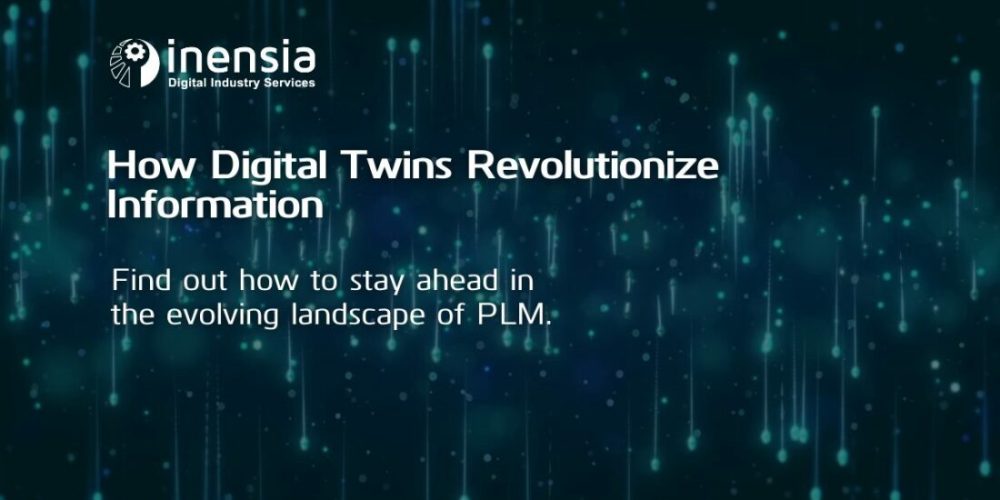What if your product could talk through its virtual replica? What if it could tell you exactly how it is performing, where it is being used, and even predict when it might need maintenance? This is not science fiction – it is the power of digital twins.
They are constantly evolving, so their effectiveness is amplified when enriched with contextual information. This is where Product Lifecycle Management (PLM) software can play a vital role.
The Promise of Digital Twins
A digital twin is a virtual model that mirrors a physical object, such as a car, airplane, or industrial machine. It encompasses all the data related to the product’s design, manufacturing, and operational history.
By continuously updating this model with real-time data from the physical product, companies can monitor and analyze its performance, predict potential issues, and optimize maintenance schedules. This not only improves the product’s reliability but also enhances its design based on real-world usage data.
The Challenge of Contextualizing Data
There is a significant challenge when it comes to using digital twins – interpreting raw data without context can lead to inaccurate or even dangerous conclusions. While AI and machine learning models are incredibly powerful in processing vast amounts of data, they require contextual information to provide meaningful and actionable insights.
We could take a look at the following example:
Consider a wind turbine that reports abnormal vibrations. Without context, this data could be misinterpreted, leading to incorrect assumptions about the turbine’s condition. Relying solely on the raw data, the issue might be mistakenly attributed to a design flaw.
However, after a thorough study, it was discovered that the issue stems from a defective bearing that was recently replaced.
Without the proper context—knowing the part was recently changed and understanding its impact—the data could have led to a costly and unnecessary design overhaul.
This scenario illustrates how contextualized data transforms raw information into reliable insights. It ensures that the interpretation of data is accurate, preventing erroneous conclusions and inappropriate actions.
The Role of PLM in Building Comprehensive Digital Twins
Product Lifecycle Management (PLM) systems play a crucial role in building accurate digital twins. PLM integrates data from various sources, including design, manufacturing, and maintenance records, to create a comprehensive view of the product’s lifecycle. By aggregating this information, they ensure that the digital twin remains an accurate and up-to-date reflection of the physical product.
Open platforms are essential in this process, enabling collaboration among different stakeholders and integrating diverse data sources. This collective intelligence fosters a more accurate and dynamic digital twin, benefiting all parties involved.
Future Implications
As AI and Big Data technologies continue to advance, digital twins will become even more sophisticated, offering deeper insights and more precise predictions. This will drive innovation and improve product quality, safety, and performance.
The transformative potential of digital twins in product lifecycle management is immense. They are set to revolutionize how companies design, maintain, and optimize their products, ensuring they meet market needs more accurately and efficiently.
By providing a detailed, real-time view of physical products, digital twins enable companies to transform raw data into actionable information, leading to significant improvements in product design, maintenance optimization, and overall performance enhancement. As technology continues to evolve, the impact of digital twins will only grow, shaping the future of industries worldwide. Some examples are the following:
- Smart cities: Digital twins can model entire cities, simulating traffic patterns, energy consumption, and environmental impact. This enables urban planners to optimize infrastructure, predict congestion, and test the effectiveness of new policies before implementation.
- Personalized medicine: Digital twins of individual patients can be created using their genetic information, medical history, and real-time health data. This allows for highly personalized treatment plans, drug development, and disease prediction.
- Sustainable agriculture: Digital twins of farms can simulate crop growth under various conditions, optimize irrigation and fertilization, and predict yields. This helps farmers make informed decisions and improve resource efficiency.
Embracing the Future with Inensia
To truly harness the potential of digital twins, companies need robust PLM solutions that can seamlessly integrate and contextualize data. This is where Inensia excels.
At the forefront of PLM innovation, Inensia offers comprehensive solutions designed to effectively create and manage digital twins. Their expertise in integrating data from various systems and ensuring real-time updates helps companies transform raw data into meaningful insights, driving better decision-making and fostering innovation.
Inensia’s open platform approach is particularly advantageous. It promotes collaboration across the entire product lifecycle and ensures that digital twins remain accurate and valuable. By partnering with Inensia, businesses can leverage cutting-edge technology to enhance their PLM processes and unlock the full potential of digital twins.
Explore how Inensia can help you stay ahead in the ever-evolving landscape of product lifecycle management.

